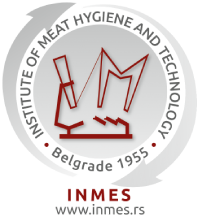Study on consumer evaluation of cooked sausages
Abstract
The mapping method in the design of internal map is one of the novel and effective ways to evaluate consumer preferences. Internal map allows determining and visualizing differences in consumer preferences to foods that are being compared. It also helps to link together different information about the food item and consumer attitude to it. The aim of this study is to investigate the possibilities of internal map’s instruments to assess consumer attitude to cooked sausages. Five samples of cooked sausage “Doktorskaya”, produced according to GOST R 521096-2011, which were purchased in department
stores of Moscow and Moscow region (samples No 332 and No 326), the city of Kirov and Kirov region (samples No 347, No 312 and No 303), were chosen for research. Fifty one respondents took part in the consumer testing. All respondents were divided into groups: two groups according to gender (male, 19.6%; female, 80.3%), and two groups according to age (20 to 25 years, 76.5%; 26 to 45 years, 23.5%). All
the description of sensory and other specific characteristics were discussed among the consumer groups previous to panel testing. Hedonic and additional information was collected with the aid of questionnaires. The results of consumer assessments were analysed together with additional attributes (demographic and other). The signifi cance of the data obtained was checked with ANOVA. The data interpretation was carried out on two principal components, which explain over 70% of all data divergence. In the fi rst stage main sensory characteristics were analysed: appearance, colour, fl avour, consistency. In the second stage some specifi c characteristics were analysed: “meaty” fl avour, “smoky” aroma, aroma of spices, “spicy” taste and “saltiness”. The obtained data demonstrated that samples No 332, No 326 and No. 347 were the leaders in terms of preference of their specifi c organoleptic characteristics.
It is evident that internal preference maps facilitate the analysis of the consumer panel testing results of both sensory and specific characteristics. Summarizing the results of the study on the consumer evaluation of product quality, it can be concluded that the use of internal preference maps allows obtaining of the complex visualized information not only about overall preference of a product but also about
preference of the individual organoleptic attributes and specifi c characteristics with regard to the market segments. Statistical analysis of the results of consumer preferences by mapping method enables to: (1) study product classes, highlight a direction and strength of liking or disliking of a product by the specifi c groups of population, determine the best and similar products by organoleptic properties; (2) study consumer requirements; (3) determine a direction of product modifi cations to optimize its organoleptic characteristics and improve perception by consumers; – assess consumer reaction on newly developed products; (4) establish the link between the product organoleptic characteristics and consumer preferences. The obtained information can be used by marketing services when developing a new product strategy and launching it to a market, studying a market structure, strengths and weaknesses of competitors, needs and motivation of buyers, the targeted work with a specifi c buyers’ segment and so on.





